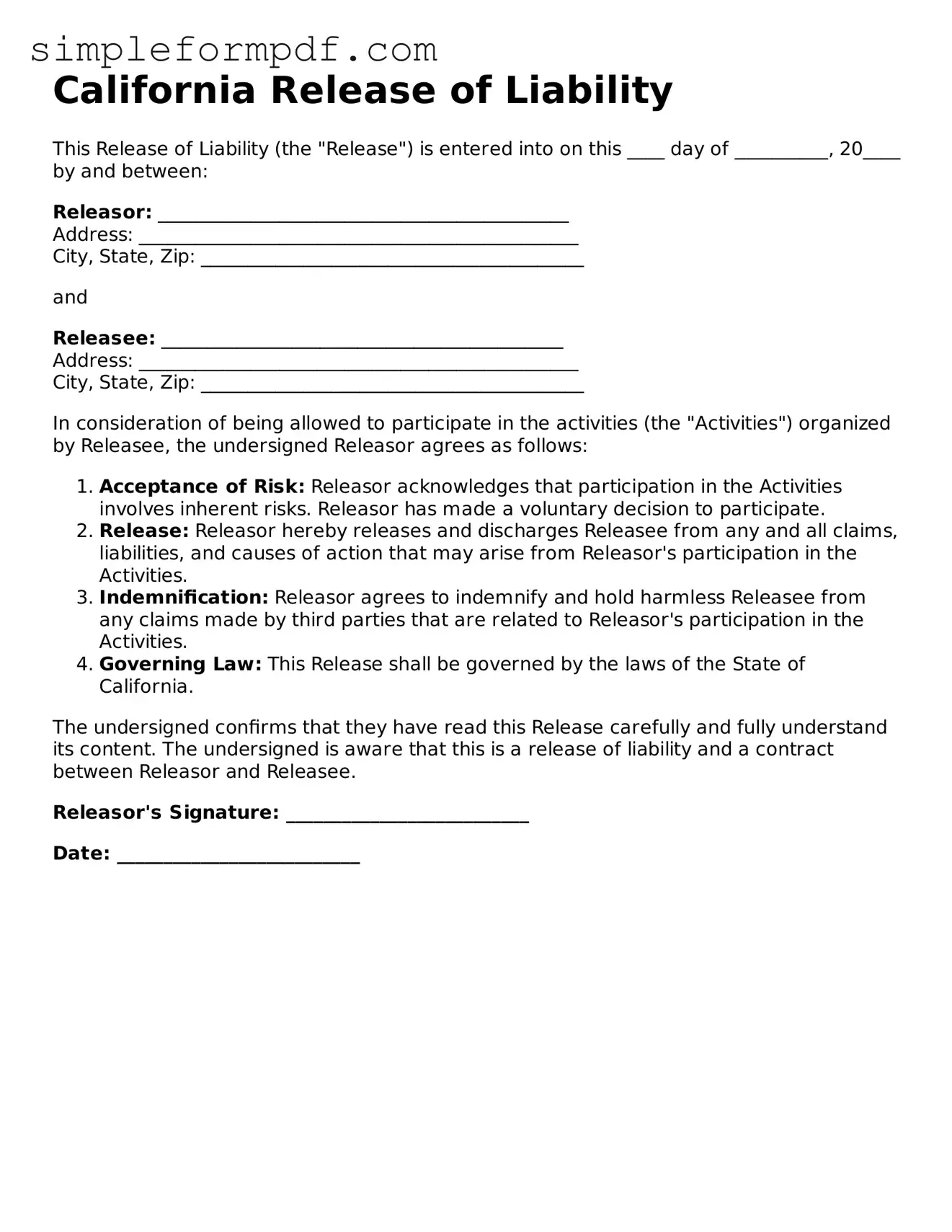California Release of Liability
This Release of Liability (the "Release") is entered into on this ____ day of __________, 20____ by and between:
Releasor: ____________________________________________
Address: _______________________________________________
City, State, Zip: _________________________________________
and
Releasee: ___________________________________________
Address: _______________________________________________
City, State, Zip: _________________________________________
In consideration of being allowed to participate in the activities (the "Activities") organized by Releasee, the undersigned Releasor agrees as follows:
- Acceptance of Risk: Releasor acknowledges that participation in the Activities involves inherent risks. Releasor has made a voluntary decision to participate.
- Release: Releasor hereby releases and discharges Releasee from any and all claims, liabilities, and causes of action that may arise from Releasor's participation in the Activities.
- Indemnification: Releasor agrees to indemnify and hold harmless Releasee from any claims made by third parties that are related to Releasor's participation in the Activities.
- Governing Law: This Release shall be governed by the laws of the State of California.
The undersigned confirms that they have read this Release carefully and fully understand its content. The undersigned is aware that this is a release of liability and a contract between Releasor and Releasee.
Releasor's Signature: __________________________
Date: __________________________
